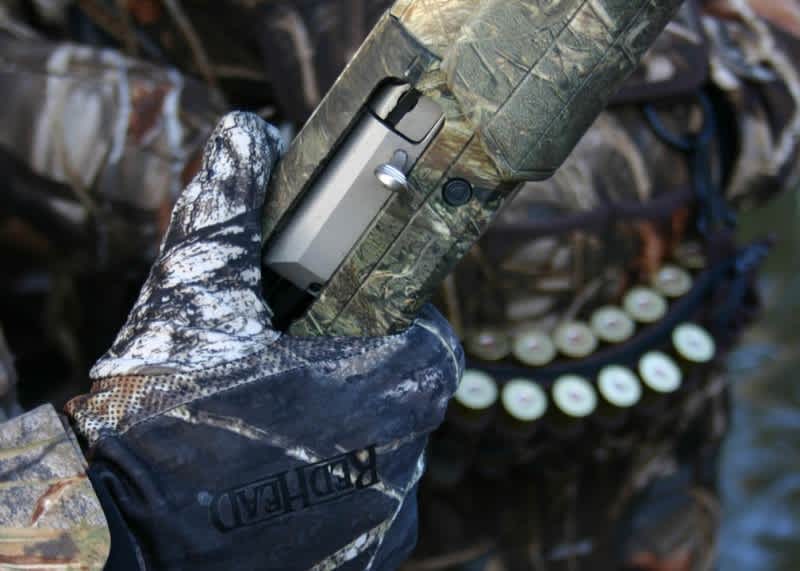How Expensive Shotgun Shells Save You Money
Bill Miller 10.13.14

How many shotgun shells do you fire for each duck or goose in your bag? I’m not talking only of the hits and misses at fresh birds coming to the decoys, passing overhead, or jumped from a meandering creek or cut field. Be sure to add in the shells you use to recover cripples, too. When you include ducks and geese hunted over water in that number, those extra shots can add up fast.
 Now think about the birds you’ve lost while shooting “bargain” shells. Every one of us has shot a duck or goose with standard steel, seen it flinch from the hit, but then watched it go on flying as though totally unaffected. Finally, a quarter-mile away, it folds up and drops like a stone in the middle of the thickest cattail slough in the state. Even a world-champion retriever brings back few of those birds. It happens more than we like to remember.
Now think about the birds you’ve lost while shooting “bargain” shells. Every one of us has shot a duck or goose with standard steel, seen it flinch from the hit, but then watched it go on flying as though totally unaffected. Finally, a quarter-mile away, it folds up and drops like a stone in the middle of the thickest cattail slough in the state. Even a world-champion retriever brings back few of those birds. It happens more than we like to remember.
What often happens in these cases is the very hard, perfectly round steel shot traveling at boosted velocity “knifes” through the bird, simply making small holes. It imparts very little of its energy to the bird. Unless major bones are struck and broken or the pattern is centered on the head of the bird, the kill is ultimately made by organ damage and the bird “bleeding out.” This doesn’t happen right away, so the bird generally flies for some distance before it goes down.
It’s impossible to put a value on a lost bird. No matter how long you’ve been waterfowl hunting and even recognizing losing an occasional bird is inevitable, it should still grind at your gut and make you ask, “What more can I do to prevent it?”
Today’s standard steel loads are far better today than the shells we old timers had available when we started shooting them in the latter half of the 1970s. But today we are further blessed with variety of “high-tech” steel and other non-toxic loads truly worth the extra money they cost. And they provide peace of mind by ensuring you’re taking every possible precaution to avoid losing birds.
 To compare raw economics, go to your local sporting goods store. You’ll see that Federal Black Cloud three-inch Steel #3 costs almost exactly twice as much as the least expensive steel three-inchers in Federal’s line (or anybody else’s, for that matter). Since the Black Cloud shell significantly boosts your odds of stoning a duck with a single shot versus having to shoot even one more shell to finish each duck you shoot, then you’re immediately breaking even with the Black Clouds.
To compare raw economics, go to your local sporting goods store. You’ll see that Federal Black Cloud three-inch Steel #3 costs almost exactly twice as much as the least expensive steel three-inchers in Federal’s line (or anybody else’s, for that matter). Since the Black Cloud shell significantly boosts your odds of stoning a duck with a single shot versus having to shoot even one more shell to finish each duck you shoot, then you’re immediately breaking even with the Black Clouds.
The misses? They’re another story. The economical and ethical route to saving money and lost birds by missing less and making better shots is practice. Take the least expensive shells you can buy (promotional target loads) and go to the sporting clays range well ahead of the season. Practice. Reduce misses. Make better shots. Missing less is by far the biggest money saver of all!
 Tip of the Week
Tip of the Week
Motion decoys are the biggest thing to have hit waterfowl hunting in a hundred years! They are so effective that some states have put regulations on what you can use and when. For example, some states don’t permit any decoys with remote-control capability. Be sure to check regulations for the state in which you hunt. However, the remote control for ThermaCELL Heated Insoles is legal for hunting everywhere. It’s ideal for hunters who wear waders. The remote control fob provides fingertip control of the off, medium, and high settings without removing your boots, gloves, or anything else. Hang the fob on your call lanyard and it’s right there when you need it.



